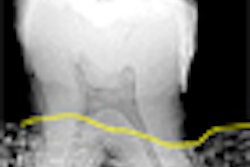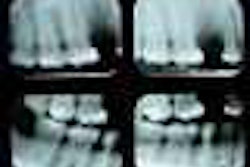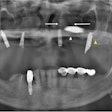Dentists can now add osteoporosis to the growing list of systemic diseases they might be able to detect. All with the help of a new software application -- Osteodent -- which is designed to detect osteoporosis by reading dental X-rays. The software was developed at the School of Dentistry and the Division of Imaging Sciences at the University of Manchester.
The Osteodent program uses ‘active shape modeling’ technology -- developed by the University of Manchester's Division of Imaging Sciences -- during the X-ray process to automatically detect jaw cortex widths of less than 3mm which is a key indicator of osteoporosis, according to an article on the University of Manchester Web site.
Osteodent was tested in a three-year EU-funded study conducted by the University of Manchester in concert with the Universities of Athens, Leuven, Amsterdam, and Malmo. The findings -- "Automated osteoporosis risk assessment by dentists: a new pathway to diagnosis" -- were published last year in the journal Bone.
"At the start of our study we tested 652 women for osteoporosis using the current ‘gold standard’, a highly expensive, DXA test. This identified 140 sufferers," said Professor Keith Horner, one of the researchers in the University of Manchester article. "Our automated X-ray test immediately flagged-up over half of these. The patients concerned may not otherwise have been tested for osteoporosis, and in a real-life situation would immediately be referred for conclusive DXA testing."
"As well as being virtually no extra work for the dentist, the diagnosis does not depend on patients being aware that they are at risk of the disease. Just by introducing a simple tool and getting healthcare professionals working together, around two in five sufferers undertaking routine dental x-rays could be identified," added Dr. Hugh Devlin another researcher in the same article.
UMIP (The University of Manchester's IP commercialisation company), has recently made a deal with Swedish company Crebone AB giving them the rights to sell the software until 2010.
"We're very excited about this product because we know it has enormous potential," said Dr. Horner in another article on the University of Manchester Web site. "As Osteodent works as part of a routine dental appointment it could have substantial benefits for our NHS financially. In countries with private healthcare systems, Osteodent could also be very lucrative to dentists."



















